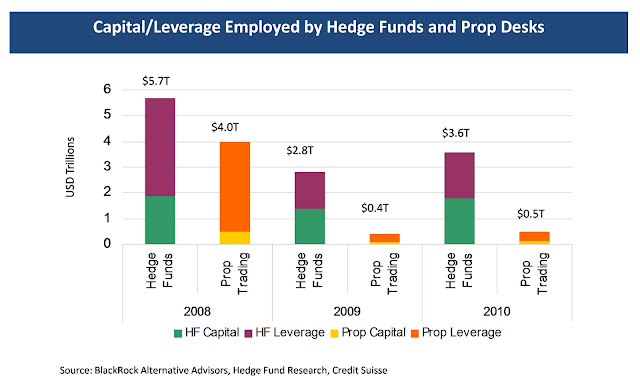One of the effects of the Credit Crunch
of 2008/9 was that counterparty risk became a major concern. Who you
lend to, the quality of collateral, and documentation related to these
factors became major operational issues. In a climate in which it became
difficult to know for sure who would be around to deliver either
collateral or borrowed securities back again the next week, it was
inevitable that the willingness to lend declined. Graphic One
illustrates that the assets available to borrow fell by 30% in the 4Q of
2008.
Graphic One
The low point for lendable assets coincided with the low for equity markets in March 2009. As a result of implicit government guarantees and the move to bank holding company status for some banks, clients regained comfort with the securities lending market, and lendable assets have been increasing to pre-Crunch levels.
Whilst the willingness to lend has
returned to levels seen previously, the desire to borrow securities has
not returned to anything like the same degree. On-loan balances, that is
the amount of securities actually borrowed, remains at around half the
level seen in the first half of 2008 (see Graphic Two).
Graphic Two
There are a number of reasons why the
volume of securities borrowed has declined and stayed at a new lower
level. The borrowers of securities would be hedge funds and proprietary
trading teams. Capital in the hedge fund industry dropped by 40% from
mid-2008 to mid-2009. In the period of the Credit Crunch proper the
capital used by prop desks was needed elsewhere in the businesses. In
the period after there were regulatory inhibitions on capital devoted to
prop trading. For both types of borrowers of securities many of the
those that engaged in running funds or prop capital had reduced risk
appetites or measured such high correlation and volatility in the
markets in which they traded that they need less capital to put the same
amount of risk on.
Graphic Three
Of course another, if not the, major
factor was that financing new borrowings of any sort became extremely
difficult - so leverage fell across all activities funded by short term
borrowing, including prop trading and hedge fund position financing. The
massive de-leveraging is illustrated in Graphic Three, which shows a 62%
fall in leverage from 2008 to 2010.
Capital allocated to prop desks today is
down by an estimated 90% from the 2008 levels, and will go lower as
banks such as Goldman Sachs and JP Morgan have announced they will
withdraw from the activity.
Securities are borrowed in order to
carry out a number of shorting strategies:
hedging activity to offset long exposures, arbitrage trading to capture
mispricing opportunities, and strategies to benefit from corporate
changes such as mergers
and acquisitions. Whilst there may still be a need for large scale
hedging, and there have been gross arbitrage opportunities in the last
18 months, the volumes of M&A deal flow have been down significantly
(see Graphic 4).
Graphic Four








